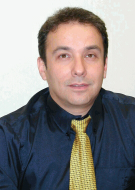June 24, 2003 – Precision Systems, a startup based in Tel Aviv, Israel, has introduced a new real-time locating system (RTLS), dubbed iLocate, which combines RF and optical technologies. The company claims that its solution is more accurate and costs far less than conventional locating systems.
“In designing the iLocate system, we were looking to answer an unfulfilled need in the market for a highly accurate, cost-effective positioning system,” says company founder and CEO Michael Braiman.
Most locating systems use active (battery-powered) RFID tags that transmit a unique serial number at regular intervals. The tags typically have a range of a 100 to 300 feet. When two receivers pick up a signal from the same tag, software can pinpoint the location of the tag to within about 10 feet.
iLocate uses cameras, instead of RF signals. The cameras have a longer range — up to half a mile outdoors — which obviates the need for having many readers placed around the area where items are being tracked. The tags can be programmed to flash at regular intervals, or when an event occurs. For example, the tag can be equipped with an accelerometer that triggers it to flash when the item is moved.
So let’s say you are tagging gas canisters in a storage area. Tag 123 on container X is programmed to flash in the fifth second of every third minute. The tag communicates with receivers via a 433 MHz RF signal to synch up the timing. When the tag flashes, the cameras take a photo. Then system identifies the tag by its time slot (if it was the fifth second of the third minute, it must be tag 123), and software is used to analyze the video image and provide the location of the item to within one foot.
When thousands of tags are being used, receivers wake each one up. The tag broadcasts a unique ID and receives in response a time slot assignment from the system. The system identifies the tag by matching its serial number to its time slot. When the tag flashes, the location is pinpointed to within a foot by the software. Since the system doesn’t use radio waves to triangulate on the tag and determine its location, it doesn’t matter if signals bounce off of walls or metal objects.
The tags cost $25 to $50, depending on the functionality needed. Readers are about $150 to $600, which is less expensive than conventional RTLS readers. Precision Systems also says fewer readers are needed, so the cost of deploying its system is far less than conventional RTLS systems.
“With two potential customers, we were able to suggest a solution that would be 20 percent of the cost of quotes they received from other companies,” says, Rom Eizenberg, Precision Systems’ VP of business development. “We are also able to offer most of our customers the ability to extend the iLocate system by using the video infrastructure they may have installed for security, monitoring and so on.”
The first commercial implementation of the iLocate will be made at the Swedish University of Agricultural Sciences’ Department of Agricultural Biosystems and Technology. The system will be installed in SLU’s experimental milk-production barn in Sweden this month, as part of an EU-financed dairy-cow research project.
Eizenberg says Precision Systems will custom design a software application that is based on what the customer wants to track and the functionality needed. The cost of the system depends on the number of cameras, RF readers, and tags, the functionality of the tags (they can be designed to track temperature, for instance) and the complexity of the tracking software.
Precision Systems has set up a sales office in Milan and is looking to work with partners to market the technology in Europe and the US. Eizenberg says that the system is designed to be flexible enough to track assets across many different industries. The next generation of the product will also include non-line of site locating to within 10 feet.


